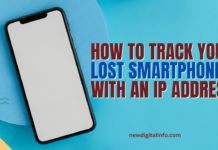In today’s online world, we must take advantage of all the resources at our disposal to obtain the maximum performance. Among the tools that we can go to, we discover many very varied and very useful, for example, URL shorteners . Do you know what they are and how you can take advantage of them to your advantage? Well, enjoy this content because here we are going to explain even the smallest detail. We started!
What is a URL shortener? When, how and why to use it?
The use of URL shorteners is a technique that consists of reducing the size of the addresses of the web pages so that the links can be attached in the smallest possible space and with a smaller number of characters.
This technique and its subsequent tools emerged at the beginning of the century, with the arrival of social networks such as Twitter or Indenti.ca , which limited the number of characters that could be used in each message or publication.
URL shorteners are, nowadays, extremely useful tools when it comes to sharing information through social media, especially in microblogging networks , where the number of characters that can be used is very limited, as we have commented.
What is a custom url shortener?
The result of shortening a URL is generally random, but you can also create custom sorts that include keywords , for example .
The popularity and usefulness of the shorteners are beyond doubt. This is a resource that was used out of necessity a few years ago with the aim of reducing endless directions, but it soon became a trend. At present, almost all platforms ( WordPress , Flickr, Google…) have their own relatively custom URL “reducers”. However, there are tools, always paid or freemium , that shorten links and offer short URLs for our own benefit.
Brief history of URL shorteners
Like the name of the tool that occupies the content of this text, the history of URL shorteners is just as short. To find its origin we have to go until 2002.
Suddenly, many experts found themselves with the need to cut the addresses of their posts and websites, since they had to deal with terribly long and complex URLs. Fact that became a serious problem for many of them.
The solution? It was Kevin Gilbertson , known to his friends as Gilby , who first shortened the URL with a tool called TinyURL .
It is curious to know that Kevin Gilbertson did not have especially big plans for the tool that he had created. I simply wanted to improve the experience for users who were forced to work with excessively long and complex URLs.
Without a doubt, this boy had no suspicion of what his tool to create short links was going to generate. In fact, it is currently used by millions of users. So much so that he himself told Wired magazine that “it was a good and simple idea that is useful to a lot of people.” Good old guy Gilby.
What can a URL shortener do?
The simple fact of shortening a URL is a small thing compared to what a link shortener can actually do. So, let’s briefly take a look at all the functions available thanks to these powerful tools.
Link masking
It is one of the main functions of URL shorteners. Masking them can be useful for a number of reasons, for example:
- For aesthetics . A regular link can be aesthetically unpleasant or too long and uncomfortable to view and read. Cropped is more attractive to the general public.
- Distribution and memorization . In addition, it helps to memorize the URL if necessary, for example, for magazine and publication websites.
- URL hiding . It also works as a kind of redirect, so it hides the final destination web of the link. This work can be worrisome in some cases, as it is widely used by malware writers to confuse users.
- Hidden from intermediate url . That is, it redirects to a link that shows sensitive information, advertising or that perhaps gives some kind of security failure .
Link shortening
Shortening a link helps save characters in posts. Let us remember that, while social networks such as Facebook or Instagram allow a fairly extensive use of written text, as does LinkedIn, for example, others such as Twitter show a notable limitation when explaining the content of the link to which we are going to redirect.
Twitter allows a maximum of 280 characters . Let’s remember that in the beginning, there were only 140. Since it is a social network with more than 300 million users, most of them very active, it is clear that shortening the URL is a vital job to be able to add important content.
Some links can occupy several lines of text and are even so long that they can be extended for several dozen characters. Hence, we can gain space for the publication and for the possible explanation with a simple URL shortener that masks it and reduces its length significantly.
Link tracking
With URL shorteners we can also track the link. What is it for? It is simple. To obtain metrics that help us analyze the geographical origin of clicks, the most active users, the volume of traffic that has been generated, the best sources of traffic, etc.
Link Retargeting
You can also take advantage of what is known as link retargeting. Once we have launched the link, by obtaining information about clicks, we can forward impacts to those users who click the URL the most or show the greatest interest in our product, publication, etc.
Thanks to the URL cutter we can segment more and better the campaigns that are launched to obtain greater success in achieving objectives.
Link rotation
Thanks to the rotation of the link we achieve that the link takes on new life. Remember that, published on a social network, the URL may be valid for just a few minutes on average. On Twitter, for example, it barely reaches half an hour.
With rotation, you give yourself a second chance, a third chance, and many more. It is used over time to generate more visits, attract more attention and, therefore, more traffic and visibility.
Exchange or change of links
You can also bet on the exchange of shortened links to achieve greater success. And is that URL shorteners are not only available for your own links, you can also use third-party links and add them to your list to share, for example, on your social networks.
When to use a URL shortener
Remember the URL shortener’s ability to personalize links by enhancing calls to action using a more descriptive technique. This way you will be able to optimize its use and enjoy, for example, options to program the impacts , which is already a possibility provided by the tools themselves for creating short links.
When should you use a URL shortener?
A shorter URL incorporates many advantages thanks to its use. So, when you use it where appropriate, you can take advantage of certain very clear benefits:
- Optimal use in the social network Twitter : since it only allows sending messages of 280 characters, shortening the URL helps to expand the text that we want to write.
- Analytics : you should use it when you need the most complete analytics possible of the behavior of the link. Whether on facebook, Twitter or any other social network or forum, the URL shortening tools offer very interesting data.
- Visual quality : when you have a link that is too long and with an unattractive visual aspect, so much so that it can negatively affect its productivity, it is necessary to have these URL shorteners to give a new touch and a substantial improvement.
- Personalization : we have already discussed the possibility of personalizing. If you have a project with a strong personal or visual line, so much so that you want a complete customization of everything that is published, the URL shortener will be an important ally.
- Competitor analysis : if you need to carry out a complete competitor analysis, a URL shortener is an interesting tool to see the social popularity and clicks that a certain link has, even before it is published. This way we can compare our project with other similar ones with which we compete directly.
When should you NOT use a URL shortener?
There are also cases in which the use of URL shorteners is not recommended. Not everything is positive with these tools. That’s why we want you to know when you should discard its use:
- Short life … or not : since shorteners became fashionable, many software and apps have closed, being now domains that offer services for adults. It means that those created URLs no longer work. Keep this in mind when choosing a specific link trimmer. We will see some of the most interesting ones in action shortly.
- Distrust : a link shortener can also generate distrust in certain types of users. If your project is based on trust with the client, do not use them, or use only the most famous ones, since their cuts have managed to be familiar among a good number of users.
- SPAM : if you use the domain of a tool that is considered spam , all the links will be spam. Be careful, if you live off your brand image on social networks, this could be counterproductive.
The best URL shorteners and how to choose the right one
URL shorteners there are dozens, maybe hundreds. What are the most interesting? Let’s see a brief list of some of those that we consider to be a priority:
- Bit.ly . It is the most widespread. Really interesting for its many functions.
- X.co . Recently created.
- Ow.ly . Related to Hootsuite, a basic online marketing tool.
- TinyURL . It is easy to use and does not require registration.
- URL Shortener by Zapier . Thanks to its high level of automation, it is a really comfortable URL shortener.
- Is.Gd . A good option with very positive aspects to shorten URLs.
- Pickle Shortener . Another tool to shorten the URL in a comfortable way.
- Yourls . Another link shortener that offers interesting tools with a rather peculiar procedure.
- Rebrandly . Very interesting for its high ability to customize the short URL.
- T2Mio . A very complete service with a very instinctive interface.
- Bl.ink . it is paid, but useful for companies that want to shorten a URL in a personalized way and incorporating more functions.
Of all these, and many more that exist, how do you choose the right one? Everything will depend on your specific needs, your budget and the purpose you seek. The most used is Bit.ly for being freemium, although others like Bl.ink are useful for companies with a large budget.










